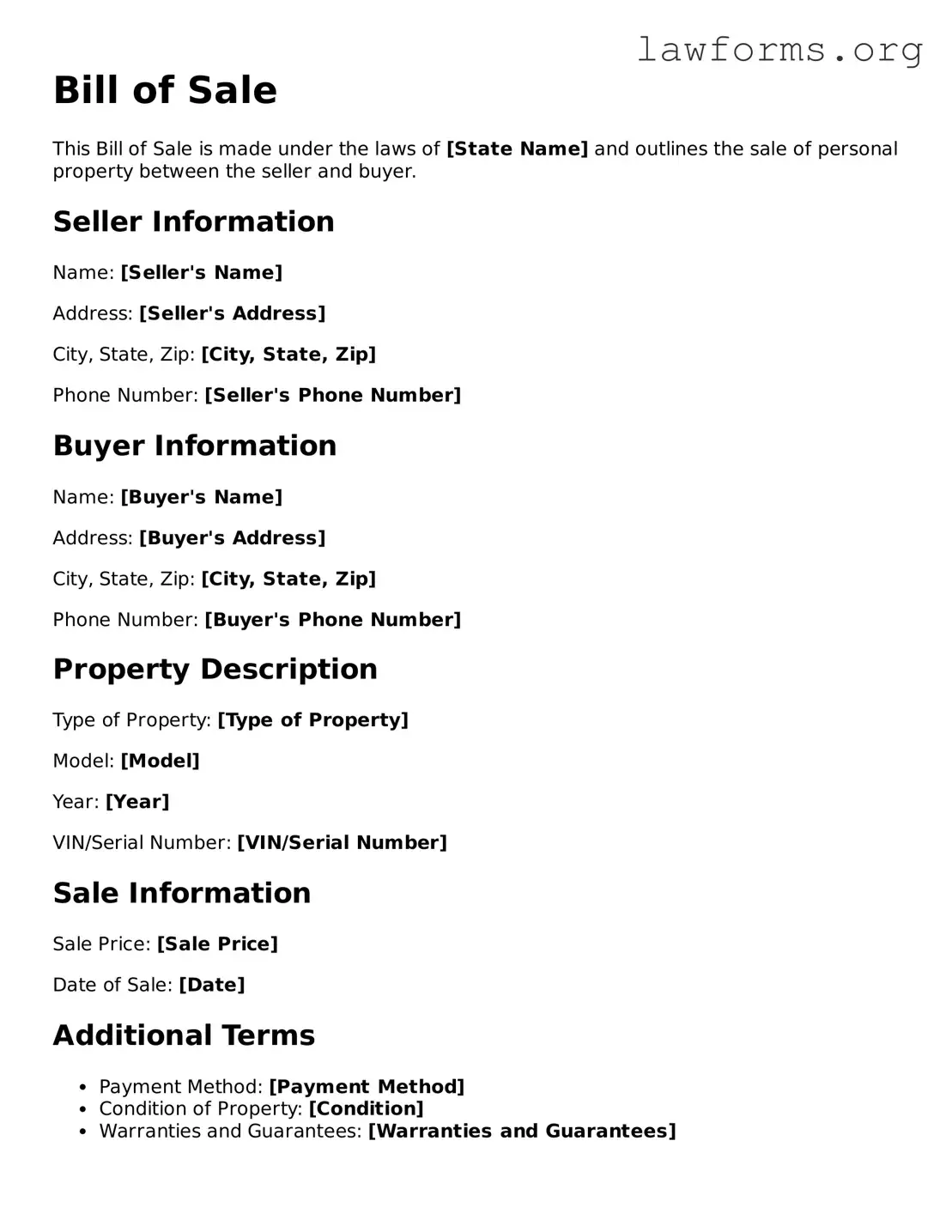Bill of Sale
This Bill of Sale is made under the laws of [State Name] and outlines the sale of personal property between the seller and buyer.
Seller Information
Name: [Seller's Name]
Address: [Seller's Address]
City, State, Zip: [City, State, Zip]
Phone Number: [Seller's Phone Number]
Buyer Information
Name: [Buyer's Name]
Address: [Buyer's Address]
City, State, Zip: [City, State, Zip]
Phone Number: [Buyer's Phone Number]
Property Description
Type of Property: [Type of Property]
Model: [Model]
Year: [Year]
VIN/Serial Number: [VIN/Serial Number]
Sale Information
Sale Price: [Sale Price]
Date of Sale: [Date]
Additional Terms
- Payment Method: [Payment Method]
- Condition of Property: [Condition]
- Warranties and Guarantees: [Warranties and Guarantees]
Signatures
The parties hereby agree to the terms outlined in this Bill of Sale.
Seller's Signature: ________________________ Date: _______________
Buyer's Signature: ________________________ Date: _______________
This Bill of Sale serves as a legal document and is binding between the seller and buyer.
